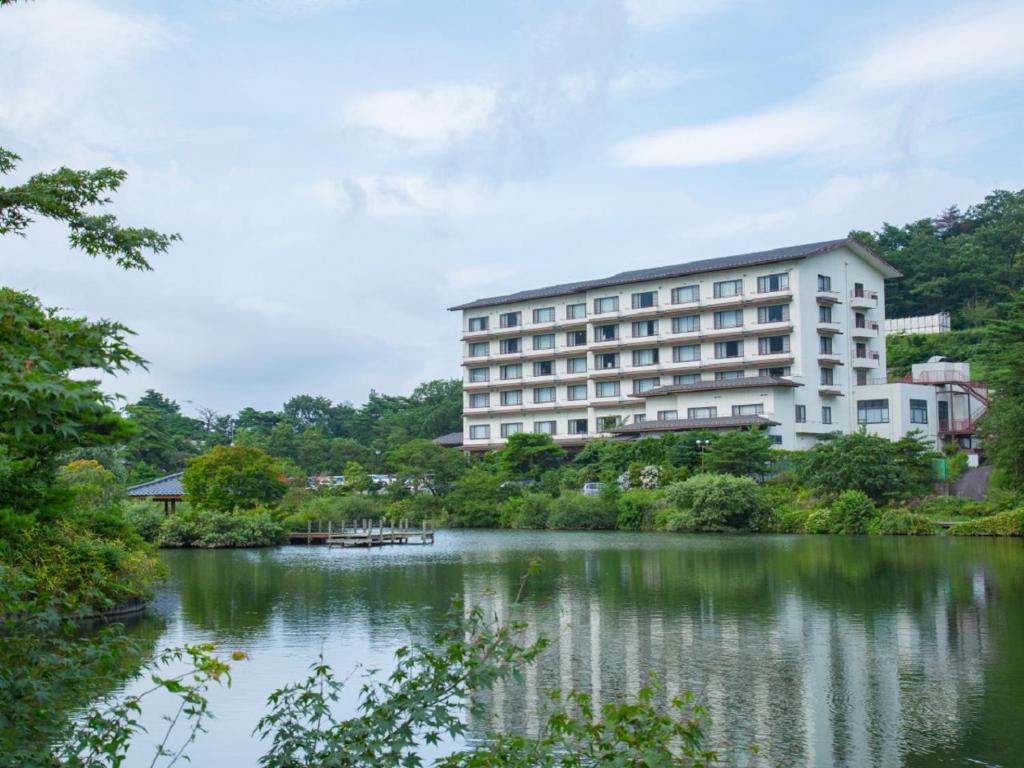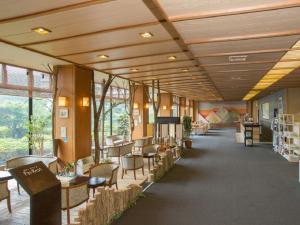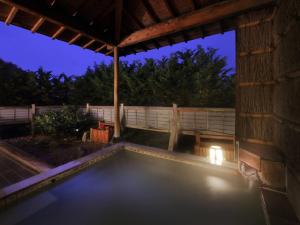Kagamigaike Hekizantei
964-0074 Fukushima, Nihommatsu, Dakeonsen 2-13, Japan – Great location - show map
Situated in Nihommatsu and only 10 km from Nihonmatsu Station, Kagamigaike Hekizantei features accommodation with mountain views, free WiFi and free private parking. It is set 27 km from Koriyama Station and provides full-day security. The ryokan offers a hot spring bath and a lift. The units in the ryokan are equipped with a kettle. Complete with a private bathroom fitted with a bath and slippers, all units at the ryokan have a flat-screen TV and air conditioning, and certain rooms are equipped with a seating area. At the ryokan, every unit is equipped with bed linen and towels. The ryokan is located in a geothermal area, with a number of hot springs nearby for guests to relax in. You can play table tennis at this 3-star ryokan, and the area is popular for skiing. Mount Bandai is 48 km from the ryokan, while Koriyama Culture Park is 32 km from the property. The nearest airport is Fukushima Airport, 57 km from Kagamigaike Hekizantei.
Distance in property description is calculated using © OpenStreetMap
- Non-smoking rooms
- Free WiFi
- Free parking
Categories:
Property surroundings
Facilities of Kagamigaike Hekizantei
- Non-smoking rooms
- Free WiFi
- Free parking
- Toilet paper
- Towels
- Slippers
- Private bathroom
- Toilet
- Hairdryer
- Bath
- Shower
- Linen
- View
- Electric kettle
- Karaoke
- Table tennis
- SkiingOff-site
- Flat-screen TV
- Telephone
- Kid mealsAdditional charge
- Accessible parking
- Vending machine (drinks)
- Luggage storage
- Fax/photocopyingAdditional charge
- Invoice provided
- Board games/puzzles
- Fire extinguishers
- CCTV in common areas
- Smoke alarms
- Security alarm
- Key access
- 24-hour security
- Safety deposit box
- Heating
- Lift
- Non-smoking rooms
- Air conditioning
- Upper floors accessible by elevator
- Public Bath
- Open-air bath
- Hot spring bath
- Japanese
House rulesKagamigaike Hekizantei takes special requests - add in the next step!
Child policies
Children of any age are welcome.
Children 3 years and above will be charged as adults at this property.
To see correct prices and occupancy information, please add the number of children in your group and their ages to your search.
Cot and extra bed policies
Cots and extra beds are not available at this property.







The fine printNeed-to-know information for guests at this property
Guests must check in by 18:00:00 to eat dinner at this property. Guests who check in after this time may not be served dinner, and no refund will be given.
FAQs about Kagamigaike Hekizantei
-
The prices at Kagamigaike Hekizantei may vary depending on your stay (e.g. dates you select, hotel's policy etc.). See the prices by entering your dates.
-
Yes, Kagamigaike Hekizantei is popular with guests booking family stays.
-
Kagamigaike Hekizantei is 3.7 miles from the centre of Nihommatsu. All distances are measured in straight lines. Actual travel distances may vary.
-
Check-in at Kagamigaike Hekizantei is from 15:00, and check-out is until 11:00.
-
Kagamigaike Hekizantei offers the following activities / services (charges may apply):
- Skiing
- Table tennis
- Karaoke
- Open-air bath
- Hot spring bath
- Public Bath
-
Room options at Kagamigaike Hekizantei include:
- Family
- Twin








